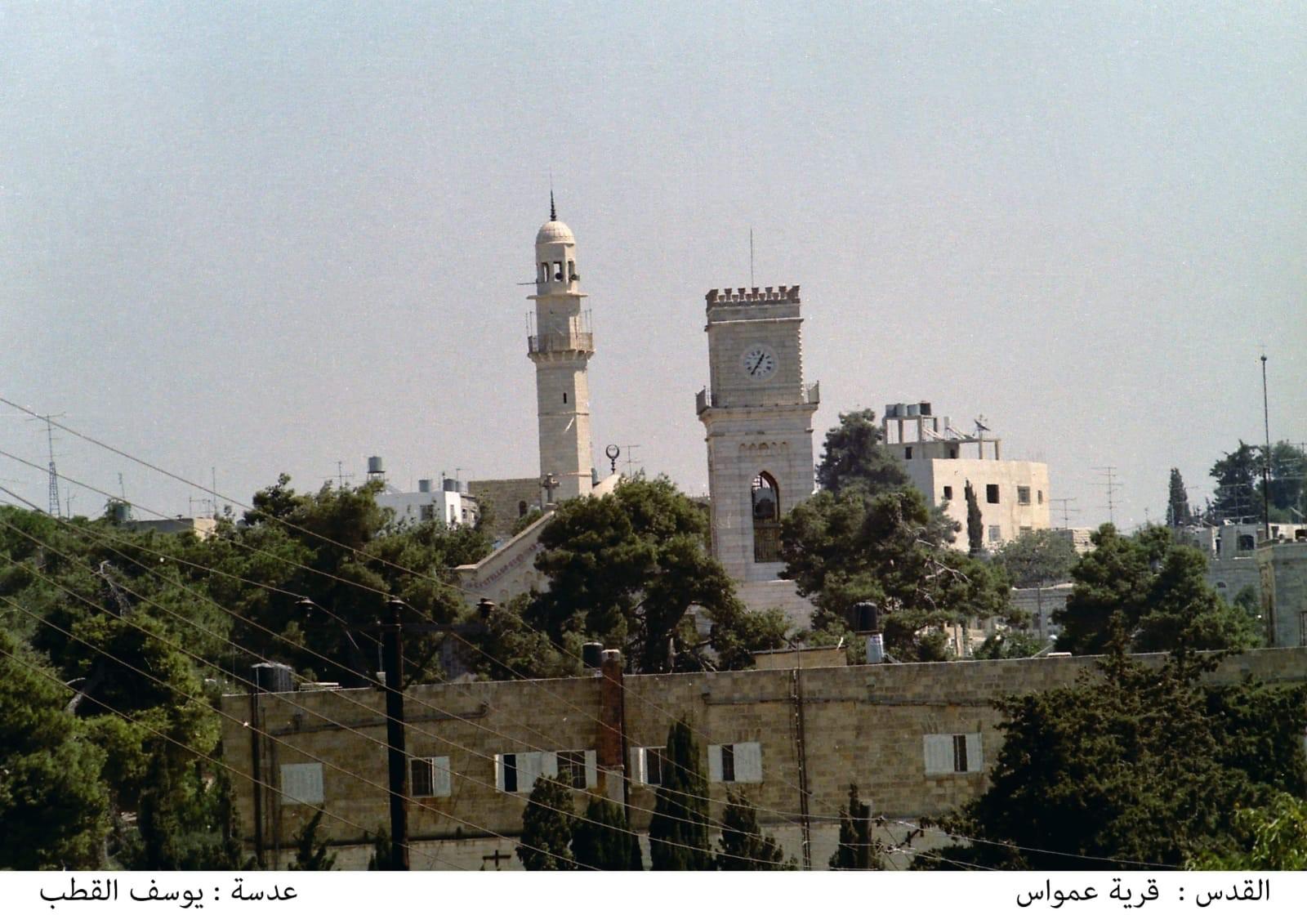
9 minute read
Mukhmas
from Volume 4 Issue 4
by paccusa
Marah Siyam
When I was ten I went herding sheep with my uncle under the close Mukhmasi sun, I drank water out of the same stone bowl as the sheep. I even waited until all the sheep drank as much water as they wanted leaving me the rest. I was sick for a month but I felt as if I had done something good.
The Dwar is a long trail off the north of Mukhmas that leads to huge cliffs and many different people’s orchards of olive trees and other plots of fruits and vegetables. After Maghrib is the best and worst time to go. The wind blows strong swerving in and out of the cliffs and caves, cooling me after those long summer nights, but the dogs have chased me out once or twice when I stayed too long.
Tel Mariam is a mountain next to my house that is believed to have been the cave Mother Mary stayed in on her journey while pregnant with Jesus. The cave is mostly still there but for my entire life, me and my friends have had picnics in the cave until I saw a bus of Christian foreigners coming to see the mountain without climbing up to the cave, just sitting at the bottom of the mountain crying. So now my friends and I try to not leave even crumbs in the cave after our picnic to keep it clean and be respectful. We understand now how much history this village holds that we may never even know.
Mukhmas is surrounded by three Israeli settlements and they often release wild boars with huge husks to destroy crops and hurt people. Once, while on my roof, a boar climbed up the path to my house reminding me of the views I stay up all night to watch are actively being stolen and threatened. The land and the skies aren’t safe.
A Palestinian radio show host once asked, “What’s the greatest village in Palestine?” The answer was Mukhmas because they have mukh or brain in Arabic and mass as in… mass. The most repeated joke I’ve ever heard, but I still laugh every time.
Every small shop in Mukhmas is named after the owner. I used to beg my grandma for shekels to buy pop rocks and ice cream. Scaring people walking by while keeping cool with ice cream was an everyday activity until I got too old and began embarrassing my parents.
Most of the scars on my body have been from climbing mountains, riding skateboards down steep Mukhmasi hills, running away from wild dogs, and jumping fences in Mukhmas. I love these scars. They connect me most to the land through both the physical scars and the memories they hold. My appendicitis scar isn’t as cool or important.
My grandma and grandpa on both sides, and now my uncle are buried in Mukhmas. It’s very important to my father to keep that cemetery clean and quiet even while we are here in America. He keeps tabs on the graves as if keeping the line of communication to them while he is away overseas working to bring them something.
I always fall asleep during the drive from Jericho to Mukhmas and yet I have the road memorized. I wake up right before we make the last right turn into Mukhmas. Those last few seconds before driving up the hill to my house are satisfying, to say the least, especially after the 24-hour journey from Jersey to Mukhmas to eat some figs and see some people before going back.
Palestinians know each other from one look. Many people have told me they know I’m Mukhmasi from my “blood,” common Arabic saying that does not translate well. I always thought the Falahi accent gave it away. Being from a village comes with pride, it’s like a club that not many people have experienced and I’m grateful I have. I have felt the freedom of space and a true connection to Palestinian land that still stands. I pray my house in Mukhmas continues to stand high, despite the occupation, for as long as I live.
قرية عمواس المدمرة والمهجرة
يوسف ايقط
ىالاع ءالاياتاسالاو راعايا نينطاوميا ريجهتب ّ يليئارسإلا لالتحالا ملق نام راياباك دداع ربجأو.ة ّ يدوهييا تارمعتسميلبلهعرزومهيزلنمومهيضارأ .8498 ملاع ةا ّ ياناوداعايا راحايا دعبندرألا ىيإ موزنيا ىلع نيينيطسلايا ةا ّ يراصاناعاياو لاهرإلاو ةا ّ يعلمجيا رزلجميا كيذ يقحتي ليئارسإ تردسو وهدم ايمنلزل وايقرى واألحيلء في مدن ايضاة ايغربية ايمحتلة، كامال حادث لابوان تايابوويليوساومع :ثالثيا ىرقيا تمد ُ ه ثيح،نورطليا ةقطنميف م، بعد أن تم طرد أهالاهال ماناهال 8498في ايسلدس من حزيران/ يونيو علم ،"اداناك هزاناتام" هايالاع لط ُ يلملهيضارأ ىلع ميقأو،لزنم8522وتدمير نلاياكايلاب لاهافاراتاعاو ةايراقايا مايلاعام راياياغاتاي ادانكةيودا ّ ربت بسبكيذو اإلسرائيلي وايتعلون ايمشترك بين ايدويتين.
قرية عمواس ايقط تصوير يوسف ايقط راب يايلامش ً ارتموليك52تقع قرية عمواس في فلسطين على مبعدة 52مدينة ايقدس ايمحتلة، إيى ايجاناو ايشارقاي مان يالفال باماسايارة ناحاو ماتار عان ساطاح اياباحار 522 واحان ةايراقايا الاااترا غلبي.لهنع ً ارتموليك ايرطىلع فرشيمله يجيتارتسا عقومتاذيهو. ً لمنود842ومسلحتهل ايقدس ـ ايرملة ـ يلفل، وطري رام هللا ـ بزة. حيث تشكل ايحد ايالصل بايان جبلل ايقدس وامتداد ايسلحل. ،ةالاحان رايد ةابرادو ،تايابالاسو وايليلتيرق ً اللمشساومع ةيرقدحتو ً لابربو، ويأ ريدوويليلتيرق ً لقرشو،زيجتيبونيسوستيبلتيرق ً لبونجو قرى ايقبل وأبو شوشة ودير محيسن. مهم ً لمومع نورطليا ىرقعقومو،مهميجيتارتسا عقومتاذساومع ةانايدام ناع ً ليعلفد ً ازجلحلكشيهنوكنمهت ّ يمهأ يتأتو،سدقليةبسنيلب ً ادج ايقدس، فهذه ايمنطقة هي ايبل ايغربي يهل.
ىالاع ورحيا يف ً اريبك ً ارودتبعيكاذ ّ يجيتارتسالا لهعقوم بسبو ،حاياث اساتاشاهاد ايشاهاياد 8442مدار ايتلريخ، وكلن آدرهال حار عالم في منطقة )أباو كابايار ، 42إسملعيل فليز أبو بوش على ترابهل في حر .يطل موقع قرى ايلطرون على "بل ايواد"، وهو ممر 81518442بتلريخ ماروةلمرياوسدقيا قرطهنم ّ عشتتو،سدقيا للبجبيلحلسيا لهسيا طبري هللا وبيت جبريان وبازة. ويشاتامال اياماوقاع عالاى وادخ عالاي ومادادالاه، رزاجايا لاتو ساواماعاك ،هانام ةابايراقايا ىراقاياو ،هايالاع ة ّ لطميا لضهياو وايلطرون وأبو شوشة ويليو وبيت نوبل. تراد ،سداقايا ةانايدام ملاتااموهف،ةريبكة ّ يركسع ة ّ يمهأ داويا لبيو ّ يابوايألا نيديا مالص ّ دصهدنعف،نمزيا رمىلع ىربككرلعمهضرأ قوف هعقوميفو، ّ خداليميا رشع ينلثيا نرقيا رداوأ دسألا لقدرلشتيرتارلب ملاع ّ خراصامايا لاشلابميهاربإ شيجهجويفسلبلنوسدقيا لبجءلنبأ فقو .8442 ملع ينيسحيا ردلقيا دبع ةدليقبداويا لبةكرعم ً اريدأو،8284
قرية عمواس ايقط تصوير يوسف ايقط
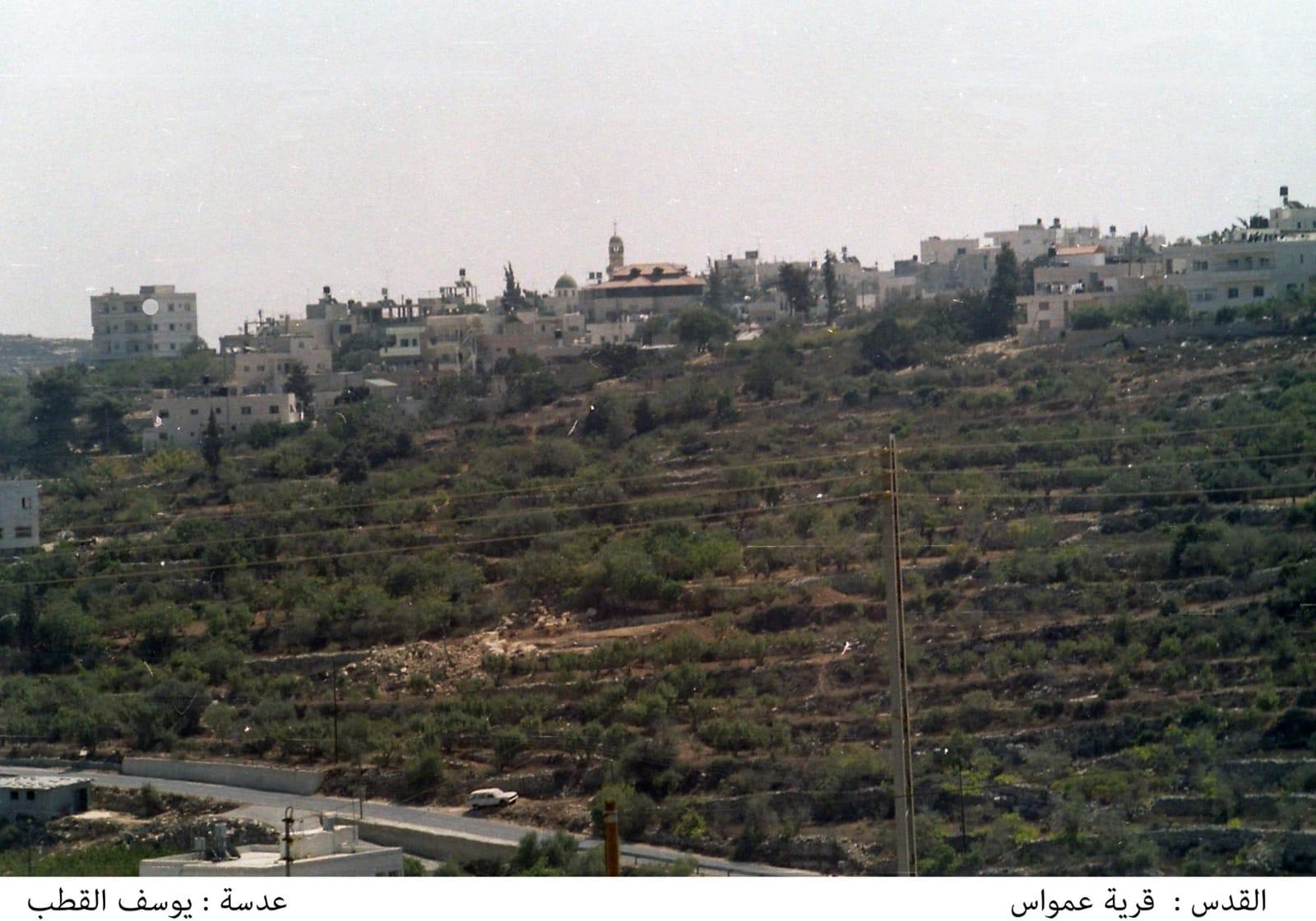

قرية عمواس ايقط تصوير يوسف ايقط
The Sweetness of Figs
Shatha Shahin
My family comes from Beit Hanina, a village that neighbors Jerusalem. Archaeologists say it may date back to the Canaanite period. It is also where a large part of the Palestinian diaspora comes from in Cleveland, my birthplace. Despite being scattered around the world, the community is a close knit one bound together due to our inseparable ties to the village. Annually, the community in Cleveland hosts a day of celebration called Beit Hanina Day to not only cherish our ties to Palestine, but to remember the village our parents and forefathers came from. Although I was not born there, I find Beit Hanina in every person of this community. My connection to them is proof that roots run deep.
Before Israel began constructing the apartheid wall that would eventually cut through Beit Hanina, my parents' village flourished and was full of life. Under Jordanian control, Beit Hanina expanded. The old village is referred to as al-Balad and the new part of the village is referred to as “upper” Beit Hanina or Ras Al-Tariq. I assume that Israel felt threatened that despite the conditions of the occupation Beit Hanina grew, so now there is a wall separating the old and new village. My father’s family remains in the old village while my mother’s side of the family lives on the other side of the wall. The road that once connected the two sides, only a five-minute walk, is now dead. It is hard to imagine how lively it once was as businesses that once stood have their shutters closed and houses that lived along the road are now empty.
There are many empty houses in Beit Hanina. Some obviously newer and some very old. When I would visit Beit Hanina, on three different occasions, I would take walks around the village fascinated by houses that were in near ruins. Who once lived in them? Are their descendants in the refugee camps in Lebanon and Jordan? Do their children
Grapes my paternal grandfather grows in “lower” Beit Hanina Photo by Shatha Shahin
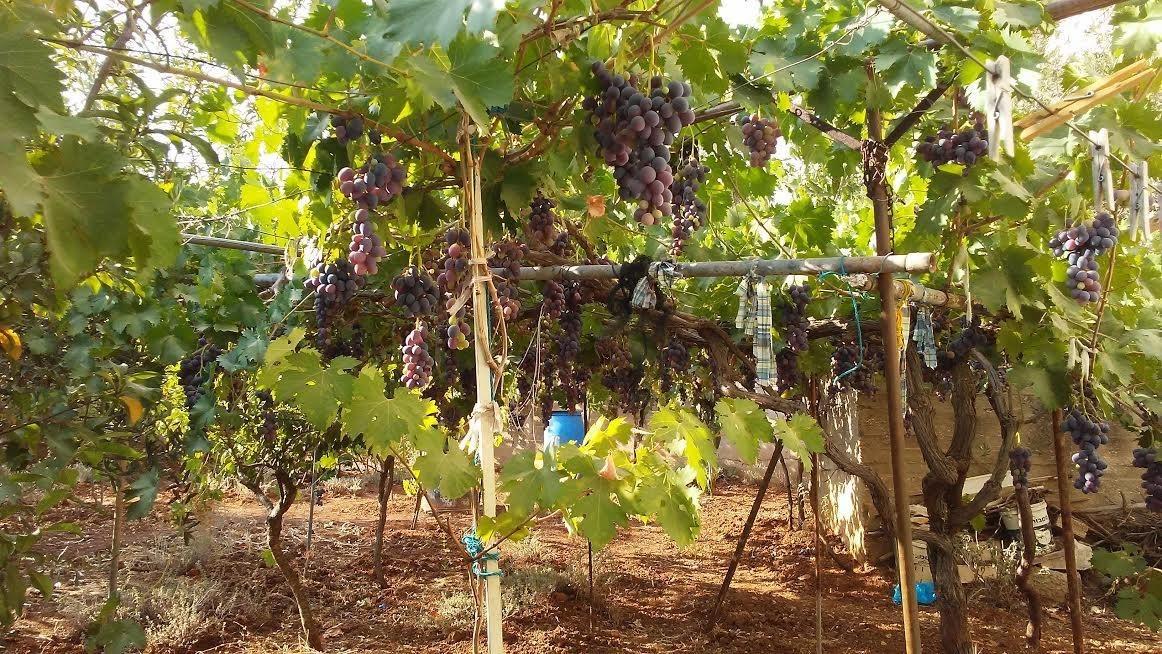
Grapes my maternal great grandfather grows at “upper” Beit Hanina Photo by Shatha Shahin He was eight years old, at most, and already knew
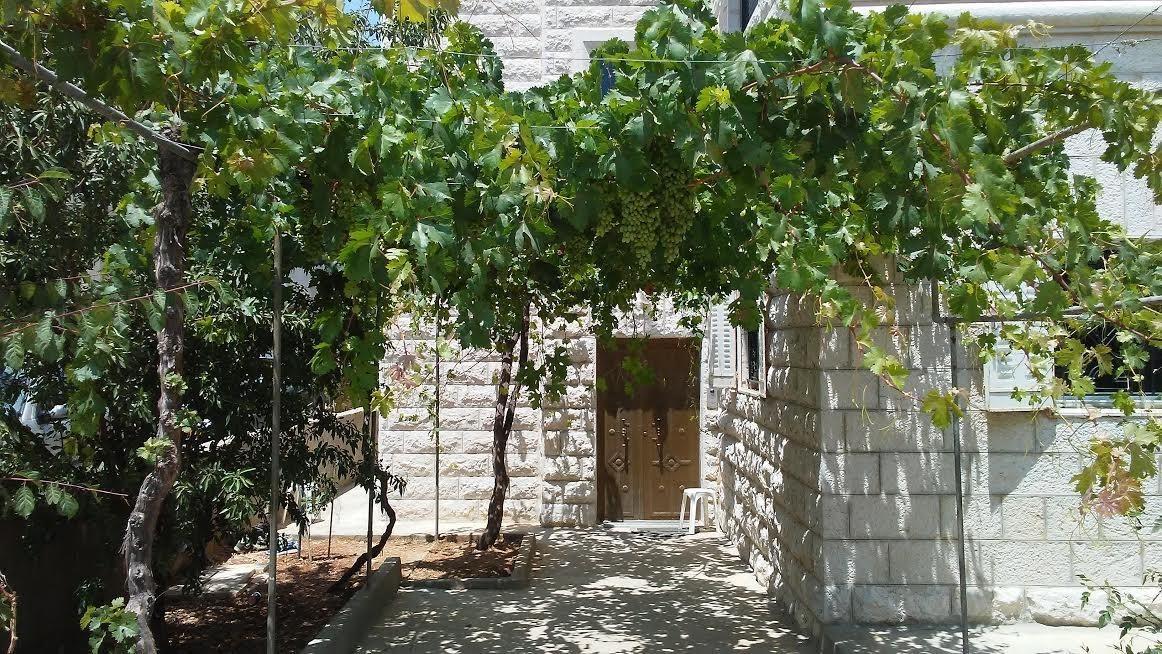
know from which village their family lived for generations? When will they return? Will they rebuild, or will the ancient homes crumble to dust with no one to mourn them?
There is so much history that we aren’t allowed to unearth ourselves, that is now only told in stories. One story that always sticks with me happened on my family’s summer visit to Beit Hanina in 2017, when we resided in the old part of the village. When the fig groves were full of ripe fruit, my aunt invited me, along with my cousins and other kids from the village, to pick them. Bored of picking figs, we turned to throwing rocks into the ditch nearby. We made a game out of it: How far can you throw the rock? As if we were skipping pebbles on a river. Though it became clear that I couldn’t throw far, I didn't see the obvious danger of the game.
Not too far ahead of us, there was a metal fence, separating roads. Up ahead, we failed to take notice of an Israeli Offense Forces jeep coming down the hill. Even though we were only playing a game, to the soldiers it could be easily taken as an act of aggression. Only when the jeep stopped did my cousin, sixteen-years-old like me, notice it and began to taunt to the boys that wandered into the ditch, “Come back up before the Israelis take you.” I wasn’t sure whether to be alarmed or not. Did they stop because of us or for something else? Then, one of the younger boys started to scream out for someone to help him up. I can never forget the look of sheer fright on his face. A fear that I could only imagine.
11 what happened to kids who threw rocks, like he just did.
Fortunately, the jeep passed, and everyone moved on to another game and ate their fill of figs. Still shaken, I was confused as to how quickly everyone moved on, but I couldn’t. Then, it dawned on me that this was how you cope living in a carceral state of being. Why dwell on a fear that cannot be escaped when you can celebrate this passing moment as a victory? The award being another day at survival and a basket of figs.
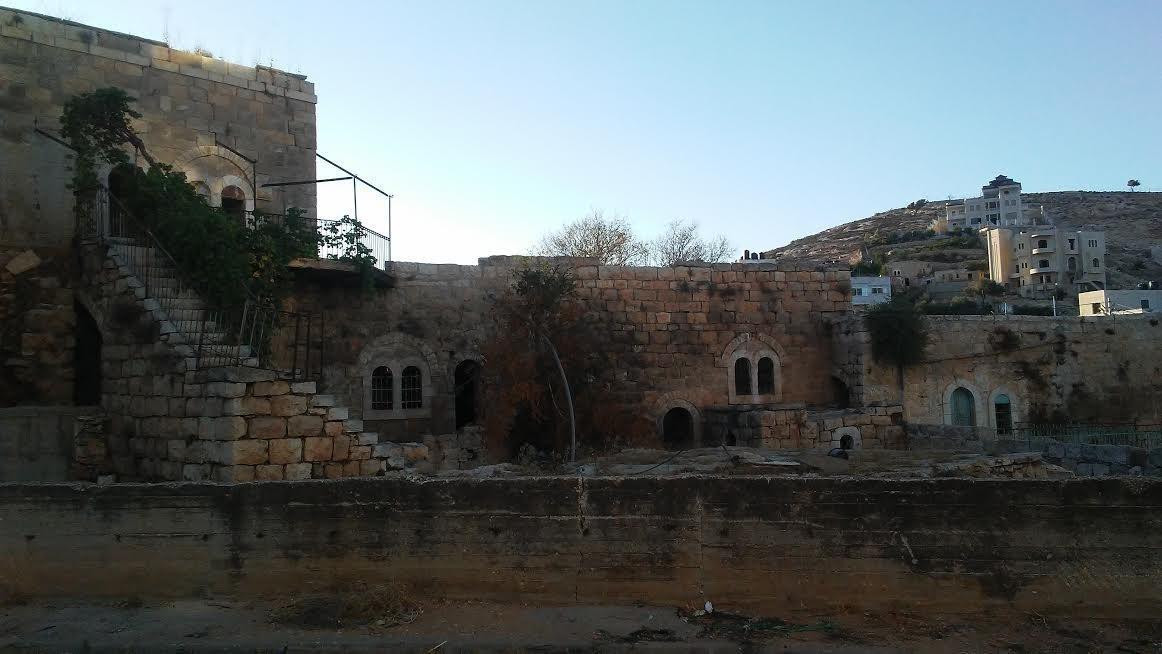
An old home at “lower” Beit Hanina’s center Photo by Shatha Shahin

